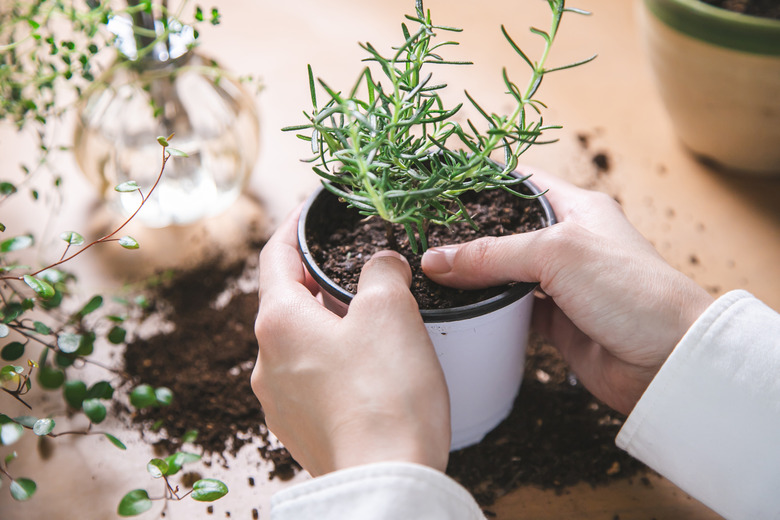Why Is My Rosemary Plant Turning Black?
We may receive a commission on purchases made from links.
Rosemary plants (Salvia rosmarinus, USDA zones 7-11) will turn black due to a variety of reasons. Humidity and insects can cause mold to form, overwatering the plant can lead to a fungal disease, and not caring for the rosemary plant properly can cause it to shed its foliage. If you notice that your rosemary plant is turning black, you'll need to identify the cause so that you can treat it properly or the plant may eventually die. Fungal diseases and mold will continue to spread on the plant and insects can even transmit the diseases to other plants in your home or garden.
Tip
Black spots on rosemary are often the result of mold, overwatering or pests, so be sure to provide your plant with plenty of sunlight and well-draining soil. If you have pests on your plant, find a food-safe insecticide for safe treatment.
Black Spots From Mold
Black Spots From Mold
Insects can cause mold or mildew to grow on the rosemary plant. The insects often leave behind a sticky substance called honeydew that causes fungal pathogens called sooty mold to grow as they feed on the honeydew. Once mold forms on the rosemary leaves, it will turn them black. Mold can form on any part of the plant and it may even thrive on the soil if the conditions are right. Too much humidity can lead to mold growth. Remove infected leaves from the plant with clean gardening shears. Cut the leaves off and disinfect the shears after each cut to prevent spreading the mold.
Fungal Diseases and Rosemary
Fungal Diseases and Rosemary
Fungal diseases often occur on rosemary plants when they are overwatered. Fungal diseases such as leaf spot will discolor the leaves and cause them to turn yellow, brown, or black. Small black dots may appear on the leaves as well, which indicates that fungal spores have formed.
A fungus generally will continue to spread unless you remove it from the plant by treating it with a fungicide such as sulfur.
Low Light Symptoms
Low Light Symptoms
Rosemary plants need full sunlight to thrive. Shady conditions can cause the leaves to die on the plant. The leaves will turn black or brown as they shed from the plant due to the lack of sunlight. The plant will continue to drop foliage until it receives an adequate amount of sunlight. Find a new location to transplant the rosemary plant where it will receive direct sunlight.
How to Prevent Black Spots
How to Prevent Black Spots
Water rosemary plants at the soil level instead of watering the foliage, because wet foliage provides an environment that allows disease pathogens to prosper. Remove dead and diseased foliage from the plant to prevent it from spreading. Spray the rosemary with insecticidal soap if you notice insects on the plant. Place the rosemary in a location where it can receive at least eight hours of direct sunlight a day. Transplant the rosemary to a new location if you are growing it outdoors.
Finally, avoid placing rosemary in a humid location because the plants thrive in dry air. Rosemary requires Mediterranean growing conditions for the best results, so always be sure to grow this plant on well-draining soil, and wait until the soil becomes fully dry before watering again to reduce the risk of root rot, which is especially important if you're caring for a potted rosemary plant.
